Table of Contents Show
When you venture outdoors, you’re entering a wildlife habitat. You’ve invaded their space, so you must keep yourself and the wildlife safe. Let’s look at the risks of wildlife viewing and tips for staying safe so you can enjoy beautiful landscapes, hiking trails, and scenic waterways!
Let’s dive in!
What Risks Does Wildlife Pose To Humans?
Although dangerous wildlife encounters are rare, there are other risks these animals pose to humans. First, sometimes they carry diseases. Rabies and Lyme disease can be very dangerous, and we can get such illnesses from the infected animal’s droppings, by touching or feeding the animal, or — although rare — by getting bitten.
Pets are also at risk for diseases. If you hike or paddle with your dog, it’s essential to keep him on a leash and keep his vaccinations current.
Wildlife can also physically injure humans and pets. This is why the National Park Service tells visitors to stay so many feet away from wildlife. They’re unpredictable even though they look tame. We’ve all read news articles about a bison goring another tourist who got too close.
What Risks Do People Pose to Wildlife?
But it’s not just the wildlife that poses risks to humans. We also endanger wildlife when we don’t follow the National Park Service’s guidelines for viewing wildlife.
Giving food to animals nourishes them with unhealthy treats. It’s much better for an animal to eat its natural substance than a piece of popcorn or cracker.
We’re also teaching them to depend on humans for food. This takes away their natural hunting abilities. Soon, these animals get used to humans and get closer, increasing the risk of dangerous encounters between people and wildlife. Sadly, food-conditioned wildlife are sometimes killed because of safety reasons.
It’s not just wildlife that gives humans and pets diseases. We can also give animals diseases. For example, the National Park Service explains, “Heartworm from dogs and cats can kill wildlife such as foxes, wolves, coyotes, bobcats, and mountain lions. Black-footed ferrets die from the flu if humans are sick and get too close. Wolves can be infected by canine parvovirus from dogs.” This is another reason to keep your pets up-to-date on vaccinations.
Finally, when humans try to pet wildlife, we’re endangering them because some animals will reject their young if they come in contact with people. This increases the young animals’ chances of getting attacked by predators.
If humans start to walk up to a wild animal, they can spook it. If this is near a roadway, the animal could run into the highway and get hit by a car. They can easily be injured while escaping from an approaching human.
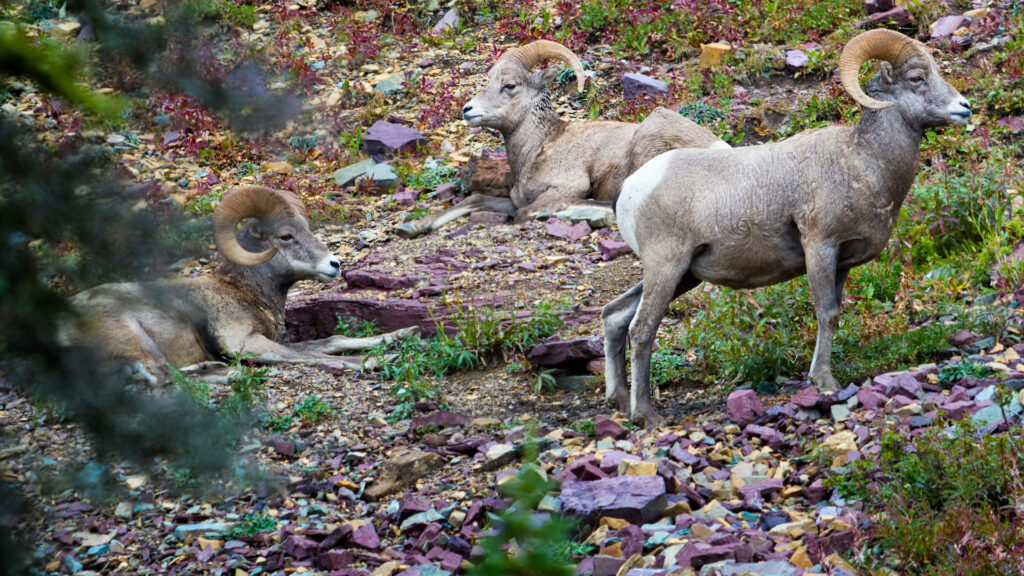
8 Tips for Viewing Wildlife Safely
We don’t want to disrupt the natural balance or endanger wildlife. So, the National Park Service has provided a few tips for wildlife viewing.
We’ve also added a few that we’ve learned over the years. By following these guidelines, we can stay safe and protect the nature we long to see.
1. Keep Your Distance
One of the biggest pieces of advice to stay safe while viewing wildlife is to keep your distance. The number of feet varies from animal to animal because of their speed.
For example, the National Park Service suggests staying at least 100 yards from bears or wolves and 25 yards from animals like bison, moose, and elk. Remember, this distance protects both you and the wildlife.
2. Stay on Trails
Next, stay on trails when hiking. Don’t make your own path. Not only does this damage the vegetation and landscape, but it also increases your chances of getting too close to an animal.
You could spook a bear or step on a snake. Stick to the hiking and biking trails to keep your distance from wildlife and have a better view of what’s around you.
Pro Tip: Before you hit the trail, you’ll want to know these hiking safety tips. They could end up saving your life!
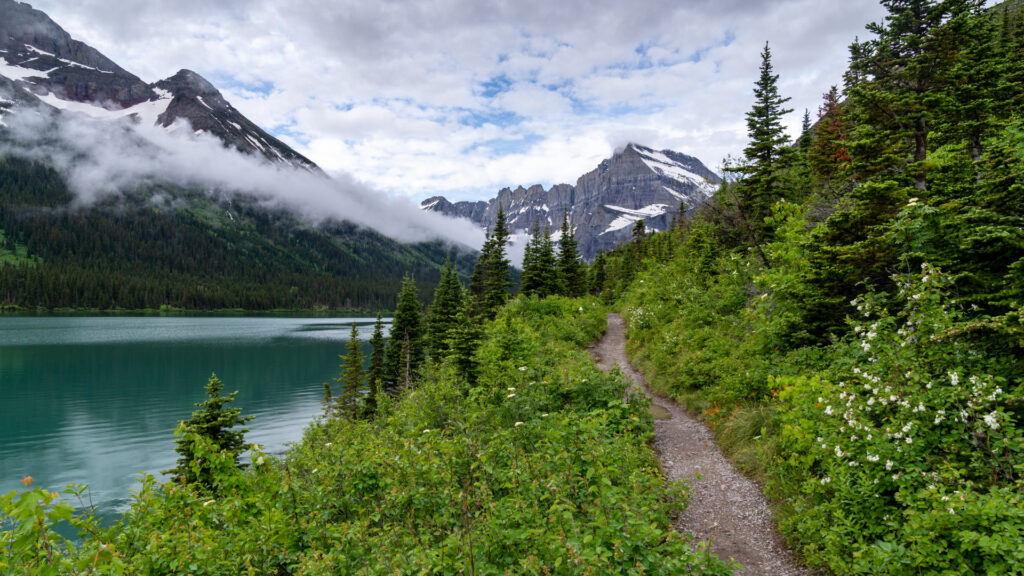
3. Don’t Feed Wildlife
This should go without saying, yet people continue to feed wildlife. Zion National Park even has signs posted along the Riverwalk begging people not to feed the squirrels.
They’ve become so used to human food that they’re losing their ability to hunt for food independently. Plus, when you feed wildlife, you’re getting much too close.
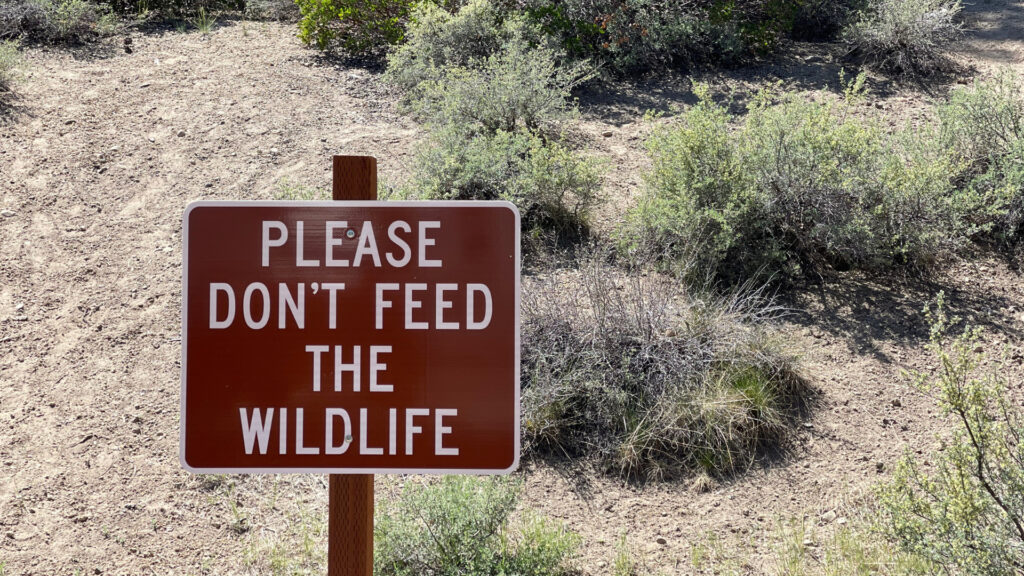
4. Drive Slowly
Wildlife is most active at dawn and dusk. So, if you enter a national park or drive a scenic byway to watch a sunrise or sunset, keep a close eye out for roaming animals.
On the flip side, these are the perfect times to have your camera and binoculars ready. Wildlife viewing at these two times of the day is ideal. But you don’t want to hit a crossing bighorn sheep or mule deer because you’re driving too fast.
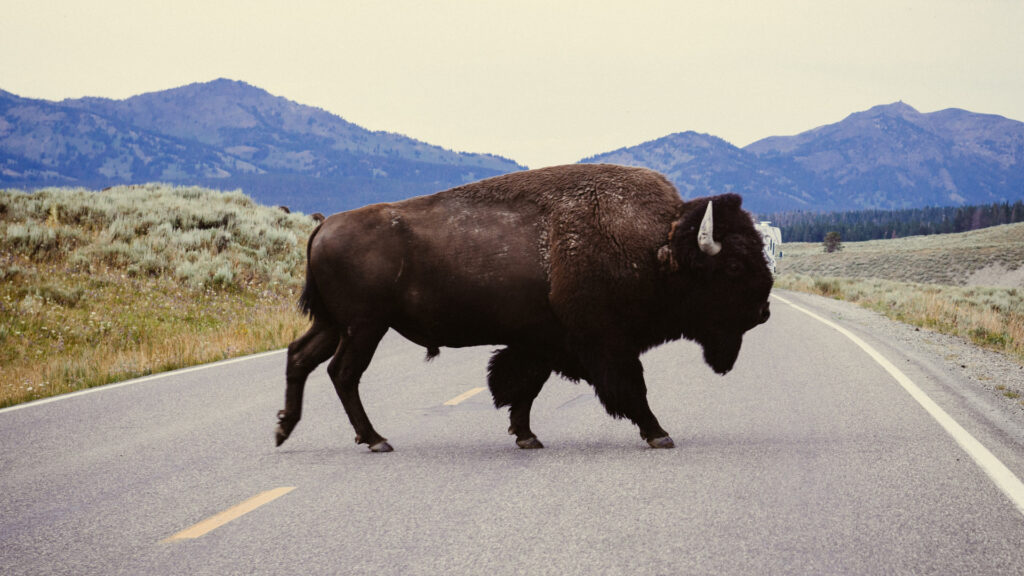
5. Pack Binoculars
Because we should keep our distance from wildlife, always bring binoculars. Then you’re not tempted to get closer and closer because you can’t see. Having binoculars on a hike or scenic drive will allow you to view wildlife from a safe distance.
6. Carry Bear Spray
Bears live all over the United States. No matter if you’re in the Everglades of Florida or the Grand Tetons of Wyoming, there’s a chance you could encounter a bear.
Always carry bear spray on your belt and know how to use it. Park rangers often have demonstrations if you’re unsure how to use bear spray properly.
Keep in Mind: Bear spray isn’t the only thing that can keep you safe from bears. Read these tips and stay ‘Bear Aware’
7. Leave Pets at Home
Although we love traveling and hiking with our dog, sometimes it’s best to leave him at home. Especially in areas with high wildlife sightings, we would rather keep him safe in the RV.
It’s also important to know the rules of national parks before bringing along your pet. Although many trails allow pets on a leash, quite a few have rules against this because of dangerous ledges, cliffs, and wildlife.
8. Pack It In, Pack It Out
Finally, when wildlife viewing anywhere, always properly dispose of your trash. Food scraps will attract animals, and we’ve already established how harmful it can be when wildlife gets used to human food. Plus, we want to take care of our environment.
So clean up a picnic area, use bear-proof canisters when camping, and put trash in its proper place.
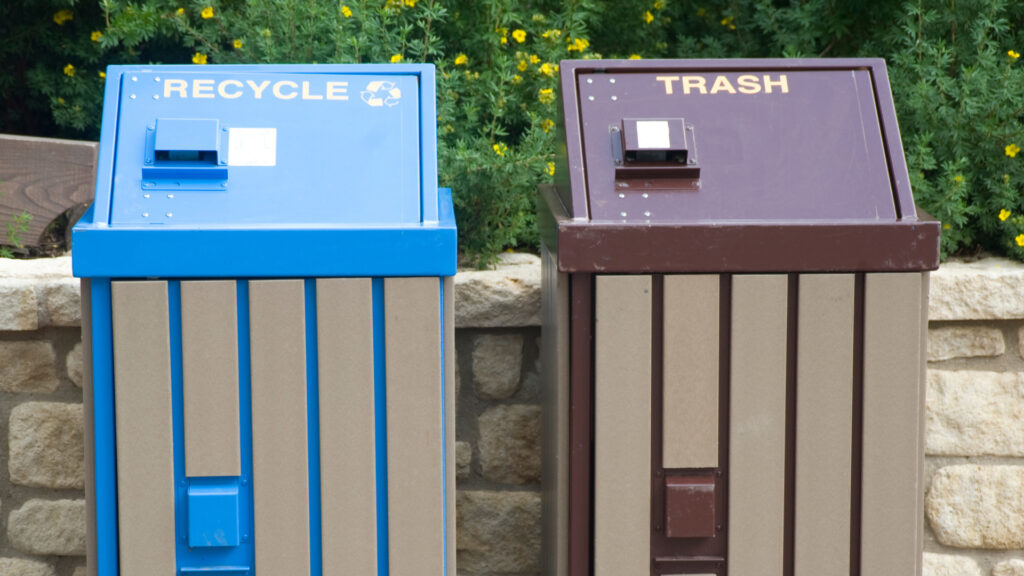
What Should You Do If You See Wildlife in Danger?
You’ll likely see wildlife as you travel, camp, and explore our country. Wildlife is all around, from moose in the Rocky Mountains to grizzlies in Glacier to black bears in the Smokies.
But if you see an animal in danger, tell a ranger as soon as possible. Tell a ranger if an animal is acting strange or you come across a carcass. Also, if you come in contact with wildlife, you must inform a ranger.
View Wildlife in Their Habitats Responsibly
Wildlife viewing is one of our favorite things to do while traveling. We learn so much about various habitats, how animals have survived through change, and what we can do to protect them. But we also recognize that we must do our part to enjoy nature responsibly.
Stay safe when you venture out on a hiking trip or rafting adventure. Be alert and take in the beauty of our country and the animals that call it home!
What is your favorite place for wildlife viewing? We’d love to know!




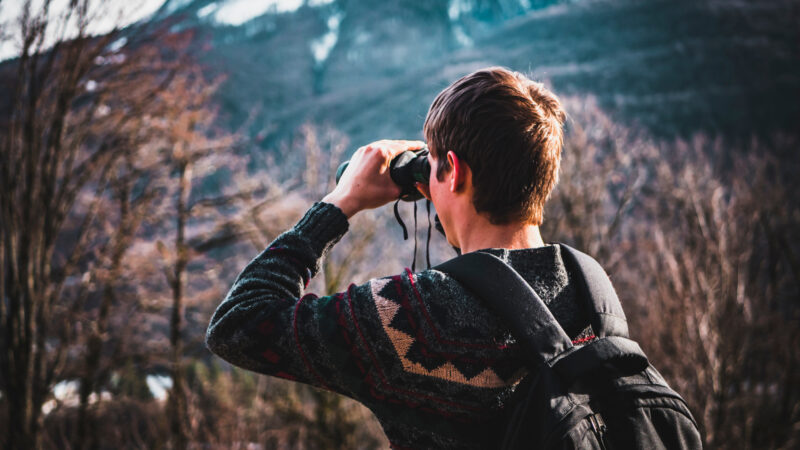
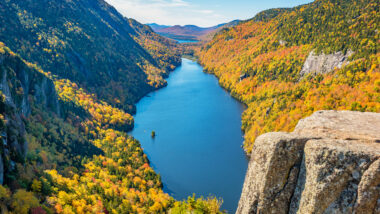

Without a doubt Grand Tetons. Take a 5:00 AM drive from Jenny Lake to Jackson, you’ll see more Elk, moose etc than you can imagine. While you’re there go to Yellowstone and see Grizzlies and Bison. These two NP’s allow for the best wildlife viewing and variety than any other NP’s including Glacier and Denali. If your going there this summer, I’m jealous!